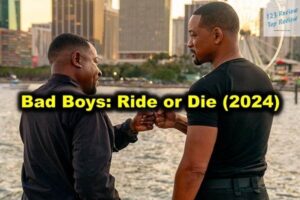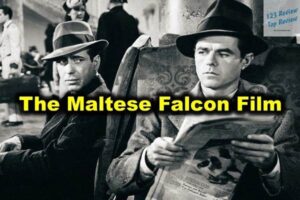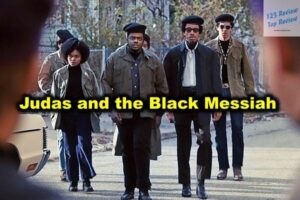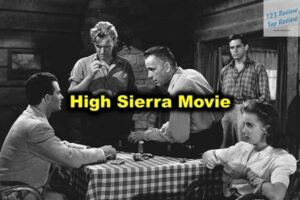Directed by the visionary Spike Lee, the BlacKkKlansman film is an adaptation of Ron Stallworth’s 2014 memoir, detailing his remarkable experience as the first Black detective in the Colorado Springs Police Department and his daring infiltration of the Ku Klux Klan during the 1970s. With its compelling narrative, strong performances, and sharp political edge, BlacKkKlansman is not just a film but a powerful statement on the enduring issues of racism, identity, and civil rights in America.
Themes and Messages
Exploration of Racism
At its core, BlacKkKlansman is an unflinching exploration of racism in America. The film delves deeply into the systemic nature of racial prejudice, examining how it permeates various aspects of society, including law enforcement, politics, and social interactions. Spike Lee doesn’t merely depict racism as an individual or isolated phenomenon; instead, he portrays it as a pervasive and deeply entrenched societal issue that affects everyone, whether they are conscious of it or not.
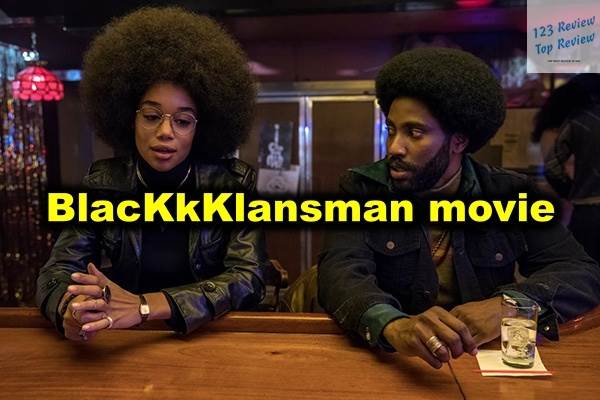
The film’s narrative is set against the backdrop of the 1970s, a time when the civil rights movement was still fresh in the nation’s collective memory, yet racial tensions remained high. Through Ron Stallworth’s eyes, we see the duality of being a Black man in a predominantly white police force and the inherent challenges this poses. The film presents racism in both overt and subtle forms, from the blatant hate espoused by the KKK to the casual racism exhibited by some of Ron’s colleagues. This duality highlights the complexity of the issue and underscores the film’s message that racism is not confined to extremists but can be found in everyday life.
The Absurdity of Hate
One of the most striking aspects of BlacKkKlansman is its portrayal of the absurdity of hate. The very premise of the film—Ron Stallworth, a Black man, successfully infiltrating the Ku Klux Klan—is ironic and deeply satirical. Spike Lee uses this irony to great effect, exposing the ridiculousness and contradictions inherent in racist ideologies. The Klan members, portrayed in the film, are often depicted as comically ignorant, blindly following an ideology that is fundamentally flawed and baseless.
Yet, while the film uses humor to highlight the absurdity of racism, it never downplays the seriousness of the issue. The juxtaposition of humor with the Klan’s vile rhetoric serves to emphasize the cognitive dissonance required to maintain such hateful beliefs. This approach forces the audience to confront the absurdity of hate while also recognizing its dangerous and destructive power. The film’s blend of satire and seriousness makes it a compelling critique of racism, revealing it as both foolish and deadly.
Civil Rights and Activism
BlacKkKlansman is also a powerful exploration of civil rights and activism. Through its characters and narrative, the film delves into the different forms of resistance against racial oppression and the ongoing struggle for equality. Ron Stallworth, the protagonist, represents a unique form of activism—one that operates from within the system. As a Black police officer, Ron is in a position to fight racism from both inside and outside the law enforcement establishment. His decision to infiltrate the Klan is a bold and risky move that reflects a deep commitment to challenging racism at its core.
The film also presents other forms of activism, particularly through the character of Patrice Dumas, a student activist and leader in the Black Power movement. Patrice embodies a more radical and confrontational approach to civil rights, one that is skeptical of the police and other institutions of power. Her relationship with Ron highlights the tensions between different approaches to activism and raises important questions about the most effective ways to achieve social justice. The film does not offer easy answers but instead presents these different perspectives in a way that encourages viewers to think critically about the role of activism in the fight against racism.
Characters and Performances
Ron Stallworth: A Complex Protagonist
Ron Stallworth, portrayed by John David Washington, is a complex and multifaceted protagonist who anchors the film. As the first Black detective in the Colorado Springs Police Department, Ron faces numerous challenges, both from within the force and from the racist organizations he infiltrates. Washington’s portrayal of Stallworth is nuanced and deeply compelling, capturing the character’s intelligence, determination, and internal conflicts.
Ron is a man caught between two worlds: on one hand, he is a police officer, committed to upholding the law and serving his community; on the other hand, he is a Black man in America, acutely aware of the racial injustices perpetrated by the very system he works for. This duality adds a layer of complexity to Ron’s character, as he navigates the dangers of his undercover work while also grappling with his identity and place in the world. Washington’s performance is both powerful and understated, conveying Ron’s quiet strength and resolve even in the face of overwhelming odds.
Flip Zimmerman: Challenges of Identity
Adam Driver delivers a standout performance as Flip Zimmerman, Ron’s Jewish partner who plays a crucial role in the infiltration of the KKK. Flip is a character who embodies the complexities of identity and the challenges of passing in a world defined by racial and religious boundaries. As a Jewish man, Flip is acutely aware of the dangers of associating with the Klan, an organization that harbors deep-seated hatred for Jews as well as Black people. Yet, in order to protect his identity and carry out the investigation, Flip must immerse himself in the very ideology that seeks to destroy him.
Driver’s portrayal of Flip is deeply affecting, capturing the character’s internal struggle as he balances his loyalty to Ron and the investigation with the psychological toll of his undercover work. The film explores the different ways in which individuals navigate their identities in a society that often demands conformity to oppressive norms. Flip’s journey is a powerful reminder of the personal costs of fighting against hate and the courage required to stand up to bigotry in all its forms.
Supporting Roles and Their Significance
The supporting cast of BlacKkKlansman is equally impressive, with each character adding depth and nuance to the film’s narrative. Laura Harrier’s portrayal of Patrice Dumas, a passionate and articulate student activist, provides a strong counterpoint to Ron’s more measured approach to activism. Patrice is a character who challenges the status quo and questions the role of the police in the fight for civil rights. Her relationship with Ron adds an emotional layer to the film, as the two characters grapple with their differing views on how best to achieve social justice.
Topher Grace delivers a chilling performance as David Duke, the Grand Wizard of the KKK, embodying the suave yet sinister nature of white supremacist leaders. Grace’s portrayal of Duke is unsettlingly charismatic, highlighting the seductive appeal of extremist ideologies to those seeking power and control. The film also features strong performances from other supporting actors, including Corey Hawkins as Kwame Ture, the former Black Panther leader, and Jasper Pääkkönen as Felix Kendrickson, a particularly menacing Klan member. Each of these characters plays a crucial role in the film’s exploration of the various facets of racism, activism, and resistance.
Directorial Style
Spike Lee’s Cinematic Techniques
Spike Lee’s directorial style is a key element in the success of BlacKkKlansman. Known for his bold and innovative approach to filmmaking, Lee employs a range of cinematic techniques to create a film that is visually striking and thematically rich. One of Lee’s signature techniques, the double-dolly shot, is used to great effect in the film, creating a surreal and disorienting atmosphere that mirrors the absurdity of the story’s events. This technique, along with Lee’s use of dynamic camera angles and rapid editing, adds a sense of urgency and tension to the film, keeping the audience engaged from start to finish.
Lee also draws on elements of Blaxploitation cinema, a genre that emerged in the 1970s and was known for its bold depictions of Black characters and themes. The film’s vibrant color palette, stylized action sequences, and sharp social commentary are all reminiscent of Blaxploitation films, but with a modern twist. Lee uses these elements not only to pay homage to the genre but also to create a film that is both entertaining and politically charged. The result is a movie that feels both retro and contemporary, blending the best of classic and modern cinema.
Use of Humor in Serious Contexts
One of the most notable aspects of BlacKkKlansman is its use of humor to address serious and often painful topics. Spike Lee expertly weaves moments of dark comedy into the narrative, allowing the audience to laugh at the absurdity of the Klan’s beliefs while never undermining the seriousness of the subject matter. This balance of humor and gravity is a hallmark of Lee’s filmmaking, enabling the film to engage viewers emotionally while also provoking thought and reflection.
The film’s humor often comes from the absurdity of the situations in which the characters find themselves. For example, the scenes in which Ron Stallworth, a Black man, speaks on the phone with David Duke, the leader of the KKK, are both hilarious and deeply ironic. The very idea of a Black man fooling the Klan into thinking he is one of them is inherently comedic, yet it also serves as a sharp critique of the ignorance and stupidity of racist ideologies. Lee’s use of humor in these scenes not only makes the film more accessible but also reinforces its central themes, highlighting the contradictions and absurdities of hate.
Visual Symbolism and Metaphors
The film is rich with visual symbolism and metaphors, which add layers of meaning to the story. From the recurring imagery of American flags to the use of color to represent different ideologies, BlacKkKlansman is a film that rewards close attention to detail. One of the most powerful symbols in the film is the juxtaposition of Black Power imagery with Klan propaganda, highlighting the stark contrast between these two opposing forces. This visual contrast serves to underscore the film’s exploration of identity and resistance, showing how different groups use symbols and imagery to assert their power and values. Lee also uses visual metaphors to comment on the nature of identity and disguise. The act of passing—whether it is Ron passing as a white man over the phone or Flip passing as a Klan member in person—is central to the film’s narrative. This theme is reinforced through the use of mirrors, reflections, and masks, which appear throughout the film as symbols of the characters’ dual identities and the ways in which they navigate a world defined by racial boundaries. These visual elements add depth and complexity to the story, making BlacKkKlansman a film that can be appreciated on multiple levels.
Historical Context and Relevance
Connection to the 1970s
BlacKkKlansman is firmly rooted in the historical context of the 1970s, a decade marked by significant social and political upheaval in the United States. The film captures the tensions of the era, from the rise of the Black Power movement to the resurgence of white supremacist groups like the Ku Klux Klan. By setting the story in this turbulent period, Lee is able to explore the connections between past and present, showing how the issues of the 1970s continue to resonate today.
The film’s portrayal of the 1970s is meticulous and authentic, from the period-accurate costumes and settings to the soundtrack, which features iconic music from the era. This attention to detail helps to immerse the audience in the time period, while also highlighting the ways in which the struggles of the past are still relevant today. The film’s historical context serves as a powerful reminder of the cyclical nature of history and the ongoing fight for civil rights and social justice.
Parallels to Contemporary Issues
While BlacKkKlansman is set in the 1970s, its themes and messages are strikingly relevant to contemporary issues. The film draws explicit parallels between the racism of the past and the racism of today, particularly in its portrayal of the Klan and other white supremacist groups. By showing how these groups have evolved and adapted over time, the film underscores the persistence of racial hatred and the ongoing need for vigilance and resistance. The film also addresses the resurgence of far-right ideologies in the modern era, particularly in the context of the 2017 Charlottesville rally, which is referenced in the film’s closing moments. This connection to contemporary events serves as a stark reminder of the dangers of complacency and the importance of confronting hate wherever it arises. BlacKkKlansman is not just a historical drama but a timely and urgent call to action, urging viewers to recognize the parallels between past and present and to stand up against racism in all its forms.
Conclusion
BlacKkKlansman is a powerful and thought-provoking film that blends historical drama with sharp social commentary. Through its compelling narrative, complex characters, and innovative directorial style, the film offers a searing critique of racism and identity in America. Spike Lee’s masterful use of humor, symbolism, and historical context creates a film that is both entertaining and deeply impactful, leaving a lasting impression on viewers. As both a reflection on the past and a commentary on the present, BlacKkKlansman is a film that demands to be seen, discussed, and remembered.
